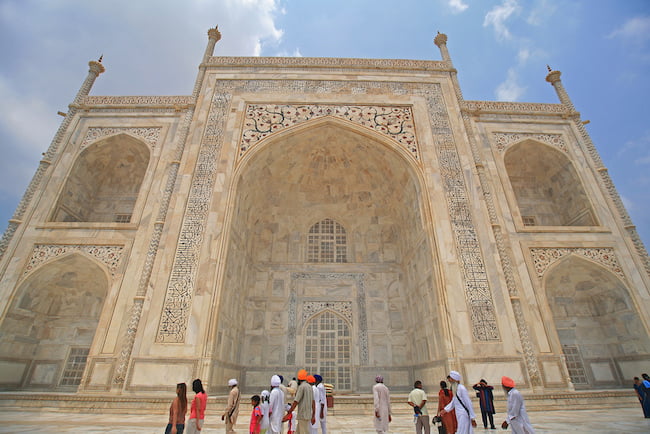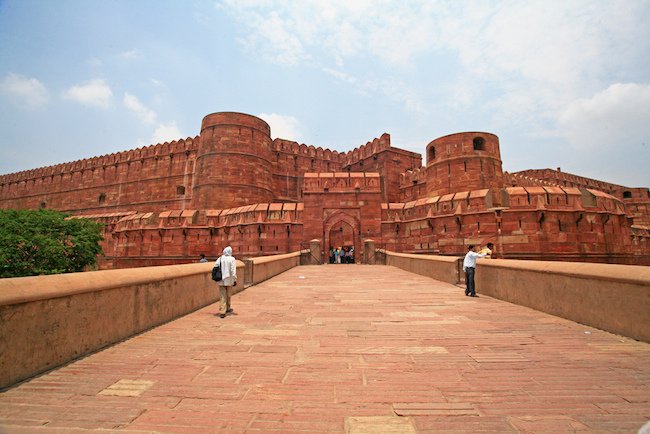 Image via SandeepaChetan’s Travels
Image via SandeepaChetan’s Travels
We love looking at architecture from all around the world. Actually, whenever we travel we can’t help but comment on this building or that – wondering which architect built it, or what his or her inspiration was, and of course – when it was built. We suppose it has a little bit to do with the fact that we’re developers ourselves, but there’s just so much history to be learned from buildings.
We’ve taken a look at modern and traditional Japanese architecture, delved a bit into our a love for Danish architects and their first-class projects, and now we’re going to take a trip back in time and head to Mughal-era India.
Mughal architecture is a style developed by the Mughal emperors during their reign in Northern and Central India from the 16th to the 18th century. It’s unique in the fact that it’s a mix of the Islamic, Persian and Indian architectural styles that were hugely popular back then. In fact, one of India’s most recognizable landmarks, the Taj Mahal was built during the Mughal era, but that’s just one of many beautiful Mughal buildings.
The Mughal trend started with Akbar in Agra, who reigned from 1556 to 1605 and built one of the finest mosques of the Mughal period, appropriately titled the Great Mosque. However, it wasn’t until Shah Jahan’s reign that Moghul architecture hit it’s peak, with the beautiful Taj Mahal being one of the most magnificent buildings to have ever been built – and all in the name of love, no less.
The Taj Mahal in Agra, India was built by Mughal emperor Shah Jahan in memory of his wife, Mumtaz Mahal who died in childbirth. The construction began around 1632 and was completed around 1653.
Now a UNESCO World Heritage Site, the Taj Mahal is truly beautiful on the inside and the outside. While earlier Mughal buildings were primarily constructed of red sandstone, Shah Jahan used white marble inlaid with semi-precious stones, setting a whole different standard for Mughal architecture. Beautiful stone inlays, carvings, gemstones and Quranic verses are used as decorative elements throughout the mausoleum.
The Taj Mahal was constructed using materials from all over Asia, with the materials transported on hundreds of elephants. The marble from Rajasthan, jade from China, sapphire from Sri Lanka and that’s just the tip of the iceberg!
The board of architects that are believed to have worked on the mausoleum included Ustad Ahmad Lahauri, a Persian from Iran who also laid the projects for another Shah Jahan project, the Red Fort.
The Red Fort built in 1648 in Delhi was the resident for Mughal emperors for almost 200 years until 1857. Can you guess why it’s named the Red Fort? If you remember from earlier in the post, most of the Mughal emperors used red sandstone, and Shah Jahan did the same for this project. It’s still an important landmark in India today, as the Prime Minister hoists the national flag there every year on August 15th (the day that India achieved independence from the British).
The Badshahi Mosque completed in 1673, in Lahore, Pakistan under the sixth Mughal emperor, Aurangzeb, and is another favourite example of Mughal architecture. To this day, it continues to be an important Lahore landmark and draws thousands of tourists every year and from 1673 to 1986, it was the largest mosque in the world (today it is the fifth largest mosque in the world, so not bad!). If you want to get a feel for how big it is, the Taj Mahal can fit in just its courtyard, and the mosque can accommodate 55,000 worshippers in its main prayer hall and 95,000 in the courtyard and porticoes. Can you believe construction only took two years for a building at this magnitude?!
Quick note: Mughal architecture is exclusive to India (i.e the Mughal era) but because Afghanistan, Pakistan and Bangladesh were a part of India at that time, there are examples of Mughal architecture there.
We love looking at old architecture, especially with such colourful history – c’mon building a monument out of marble for your wife? That’s pretty romantic! What are some of your favourite old buildings? Let us know below and maybe we’ll do a little history lesson on them!




